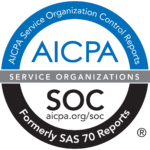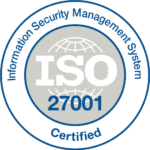| Table of content |
| 1.Introduction 2.Understanding NRR 3.Alignment of Sales and CS team 4.Stratagies to Grow NRR 5.Conclusion 6.FAQ Section |
Introduction
In today’s highly competitive business landscape, where customer acquisition costs continue to rise, organizations are increasingly realizing the significance of focusing on customer retention for sustainable growth. Revenue retention success goes beyond the initial purchase; it revolves around creating a holistic customer experience that nurtures long-term relationships. To achieve this, organizations must align their structure, culture, and compensation in a harmonious symphony, where each element plays a crucial role in maximizing customer success.
Net Revenue Retention (NRR) emerges as a vital metric in this pursuit, reflecting the company-wide effort to retain and expand customers over a specific period. Calculated by considering total revenue, including expansion revenue, minus revenue churn, NRR becomes a defining measure of a SaaS or subscription-based business’s health and resilience. Exceeding 100% NRR indicates that a company retains and expands its customer base successfully, fueling business growth and profitability.
In this blog post, we delve into the multifaceted aspects of aligning the entire organisation for revenue retention success. By exploring the benefits of sales and customer success alignment, growth strategies for NRR, the role of culture, and the impact of compensation, we aim to empower businesses with actionable insights to thrive in an ever-evolving market. Ultimately, the goal is to create a customer-centric ecosystem that fosters enduring relationships, driving sustainable growth and customer satisfaction.

Understanding Net Revenue Retention (NRR)
Before delving into the strategies for aligning the entire organization for revenue retention success, let’s first understand the concept of Net Revenue Retention (NRR). NRR is a key metric that reflects a company’s effort to retain and expand customers over a specific period.
NRR is calculated as total revenue, including expansion revenue, minus revenue churn. For SaaS or subscription-based businesses, NRR serves as a qualifying metric to determine their health and success. Ideally, a financially sound SaaS company would have an NRR exceeding 100%, and best-in-class NRR is typically in the ~110%/120% range, indicating a high customer retention rate.
Alignment of Sales and CS Teams
Aligning sales and customer success teams yields a multitude of benefits, creating a powerful synergy that drives revenue retention and customer satisfaction. When these two essential departments work together seamlessly, the positive impact reverberates throughout the entire organization. Let’s explore the key benefits of this alignment, backed by relevant data and numbers:
- Enhanced Customer Retention: Studies have shown that aligned sales and customer success teams can significantly improve customer retention rates. According to research by HubSpot, companies with tightly aligned sales and marketing functions experience a 36% higher customer retention rate than those with disorganized teams. When sales and customer success work collaboratively, they can address customer needs effectively, ensuring a seamless transition from the sales process to ongoing support, ultimately leading to higher customer satisfaction and retention.
- Increased Revenue from Existing Customers: The alignment of sales and customer success teams allows for better identification of upselling and cross-selling opportunities. A study by Bain & Company found that increasing customer retention by just 5% can boost profits by 25% to 95%. When sales and customer success teams collaborate to identify expansion opportunities, the organization can capitalize on the potential to generate additional revenue from existing customers, fostering long-term loyalty.
- Faster Resolution of Customer Issues: Aligning sales and customer success teams streamlines communication and enables swift resolution of customer issues. According to a survey by Forbes Insights, 62% of companies with aligned sales and marketing teams reported faster issue resolution. When customer success teams have access to valuable insights and data collected during the sales process, they can provide personalized and timely support, leading to improved customer satisfaction.
- Improved Sales Efficiency: Proper alignment between sales and customer success ensures that sales reps focus on attracting the right customers who align with the company’s value proposition and offerings. This targeted approach leads to more qualified leads and efficient sales processes. According to the Aberdeen Group, companies with aligned sales and marketing teams achieve an average of 20% annual growth in revenue.
- Strengthened Customer Advocacy: Satisfied customers are more likely to become brand advocates and refer new business. When sales and customer success teams work cohesively to provide an exceptional customer experience, they lay the foundation for fostering brand advocates. A study by Texas Tech University revealed that 83% of satisfied customers are willing to refer a product or service to others, underscoring the power of customer advocacy in driving new business.
- Enhanced Customer Lifetime Value (CLV): Customer lifetime value is a critical metric that measures the net profit attributed to the entire relationship with a customer. Aligned sales and customer success teams contribute to increasing CLV by nurturing long-lasting customer relationships and identifying opportunities for repeat business. According to a study by Harvard Business Review, increasing customer retention rates by just 5% can result in a 25% to 95% increase in CLV. Aligning sales and customer success teams is a strategic imperative for any organization aiming to achieve revenue retention success. The data-backed benefits are clear: improved customer retention, increased revenue from existing customers, faster issue resolution, improved sales efficiency, strengthened customer advocacy, and enhanced customer lifetime value. By fostering collaboration and synergy between these departments, organizations can create a customer-centric culture that drives sustainable growth and long-term success.

Strategies to Grow Net Revenue Retention (NRR)
Revenue operations and customer success experts recommend various strategies to enhance NRR. Among them, properly incentivizing sales and customer success teams and aligning compensation with NRR numbers are particularly effective. Recognizing and rewarding sales reps for their contributions to NRR can also drive motivation and foster a customer-centric approach.
For instance, segment analysis can lead to cohort-based action, and setting up the right sales and customer success processes can significantly improve NRR. By optimizing these strategies, organizations can enhance their NRR, leading to improved business performance and profitability.
Illustrating Net Revenue Retention (NRR) with Examples
Let’s use an example to illustrate the calculation and significance of NRR. Suppose a SaaS company has an MRR of $100,000 at the start of the month. During the month, it gains $10,000 in expansion revenue and loses $5,000 in churned revenue. The NRR for the month would be calculated as follows:
Net Revenue Retention = (Starting MRR + Expansion MRR – Churned MRR) / Starting MRR Net Revenue Retention = ($100,000 + $10,000 – $5,000) / $100,000 Net Revenue Retention = 1.05 or 105%
This means that the company retained 105% of its original revenue for that specific period. Such metrics provide valuable insights into the health of a business and its ability to retain and grow its customer base.
Organizational alignment stands as the cornerstone of revenue success, forming the bedrock upon which thriving businesses are built. When all facets of an organization, from various departments to individual team members, work in harmony towards a common goal of revenue retention, the results can be transformative.
Effective alignment ensures that every team’s efforts are synchronized and complementary, maximizing the organization’s ability to deliver value to customers consistently. When sales, marketing, customer success, and other teams work together seamlessly, they can identify growth opportunities, address customer needs promptly, and create an exceptional end-to-end customer experience.
Moreover, organizational alignment cultivates a customer-centric culture, where everyone understands the significance of customer retention and actively contributes to it. This shared understanding fosters a sense of purpose and collaboration, creating an environment where employees feel empowered to go above and beyond for customers.
Organizations with strong alignment are better equipped to adapt to changing market dynamics, respond to customer feedback, and innovate to meet evolving needs. As a result, they can stay ahead of the competition and build enduring relationships with their clientele, driving sustainable revenue growth.
By prioritizing organizational alignment, businesses position themselves for long-term success. It is not just about individual efforts but about the collective strength of the entire organization working cohesively towards a shared vision of revenue retention excellence. With the foundation of organizational alignment firmly in place, businesses can navigate challenges with agility and resilience, capitalizing on opportunities for growth and continued success.
Conclusion: Driving Sustainable Growth Through Revenue Retention
In conclusion, revenue retention success is a fundamental aspect of any organization’s growth strategy. By aligning the structure, culture, and compensation, businesses can maximize customer success and foster long-term relationships with their clientele. Net Revenue Retention (NRR) serves as a crucial metric to measure customer success and business health, providing insights into the effectiveness of retention efforts.
As the business landscape continues to evolve, organizations that prioritize customer satisfaction and invest in aligning their teams will thrive. By leveraging a customer-centric culture, proper compensation strategies, and a focus on NRR growth, businesses can create a thriving ecosystem that drives sustainable growth and customer satisfaction.
FAQ: Aligning the Entire Organization for Revenue Retention Success
Q1. What is Net Revenue Retention (NRR), and why is it important for businesses?
A1. Net Revenue Retention (NRR) is a vital metric that reflects a company’s effort to retain and expand customers over a specific period. It calculates total revenue, including expansion revenue, minus revenue churn, and serves as a qualifying metric to gauge the health of SaaS or subscription-based businesses. NRR exceeding 100% indicates a financially sound company with high customer retention rates, essential for sustainable growth and profitability.
Q2. How does aligning sales and customer success teams benefit businesses?
A2. Aligning sales and customer success teams enhances customer retention, increases revenue from existing customers, and leads to faster issue resolution. It also improves sales efficiency by focusing on qualified leads and strengthens customer advocacy through exceptional customer experiences.
Q3. What strategies can organizations implement to grow Net Revenue Retention (NRR)?
A3. Revenue operations and customer success experts recommend incentivizing sales and customer success teams based on NRR numbers, aligning compensation with retention goals, and recognizing contributions to NRR. Employing segment analysis and setting up the right processes can also enhance NRR.
Q4. How can a customer-centric culture impact revenue retention success?
A4. A customer-centric culture fosters enduring relationships with customers and creates a shared understanding of the value of customer retention. It empowers employees to prioritize customer satisfaction, leading to increased loyalty and advocacy.
Q5. Why is organizational alignment essential for revenue success?
A5. Organizational alignment ensures that all departments work cohesively towards revenue retention goals. It maximizes efficiency, drives a unified customer experience, and positions the business to adapt to market changes effectively.
Q6. How does revenue retention contribute to the overall growth of a business?
A6. Revenue retention leads to increased customer lifetime value, repeat business, and positive word-of-mouth referrals. By nurturing existing customers, businesses can achieve sustainable growth, improve profitability, and gain a competitive edge.
Q7. What are some numerical data and statistics related to revenue retention success?
A7. Best-in-class NRR is typically in the ~110%/120% range, indicating superior customer retention capabilities. A 5% increase in customer retention can boost profits by 25% to 95%, showcasing the significance of retaining existing customers for business success.
Q8. How can organizations ensure successful implementation of alignment strategies?
A8. Successful implementation requires clear communication, collaborative efforts, and continuous monitoring of key performance indicators. Setting achievable goals and fostering a culture of teamwork and innovation are also crucial factors for success.
Q9. How can businesses maintain alignment and adapt to changing market dynamics?
A9. Regular performance evaluations, feedback loops, and ongoing training and development can help businesses stay aligned and agile. By embracing a growth mindset and being open to innovation, organizations can navigate challenges and embrace opportunities for continuous revenue retention success.
Q10. Can alignment efforts lead to improved customer satisfaction and loyalty?
A10. Absolutely! When sales, customer success, and other teams work in harmony, they can deliver exceptional customer experiences, leading to increased satisfaction and long-term loyalty. This positive impact on customer relationships directly contributes to revenue retention success.






